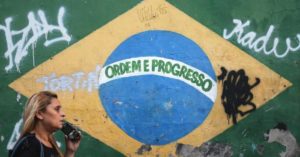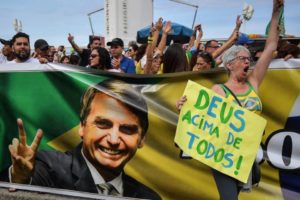
The two candidates for the post of new president of Brazil, who entered the second round, received a total of about 75% of the votes. Theoretically, a quarter of Brazilians in the next round of voting on October 28 will have to make a new choice. The remaining three quarters of the voters must also either confirm their initial preferences or “flip over” to the other side, which is unlikely, because there are only a little time left until the final stage. Accordingly, a 25% vote will decide the victory in the second round; voted for none of the “victors”: Jair Bolsonaro (“Social Liberal Party”, PSL), or Fernando Haddad (“Workers Party”, PT). By the way, a small figure of 13% of the valid votes for Ciro Gomes (“Democratic Labor Party”, PDT) will also be the main trophy in this dispute.




On the other hand, if we carry out a political analysis from the point of view of adherents of “Workers Party”, in this case Fernando Haddad needs to add on to 31 million votes another 24 million, or about 87% of voters, who in the first round did not vote for the candidate of the liberals, nor the triumphant who took the second place. Since 43% of these voters for Ciro Gomes, an alliance between the “Democratic Labor Party” and the “Workers Party” could significantly reduce the difference, which at the moment clearly it supports Bolsonaro. But even if Ciro Gomes will give one hundred percent of his votes to Haddad, which, as public opinion demonstrates, is highly unlikely: the latter will still have to fight for the missing 11 million voters who gave preference to other candidates in the first round.
In order to clarify the situation: the second round is not a new election, but the continuation of the first round. Two rounds are interdependent events, in which each candidate’s ability to convince voters to cast their vote in his favor will play a key role. At the first stage, Bolsonaro already managed to secure a numerical advantage. But before the candidate of the “Workers Party” is a much more difficult task.

As the Brazilian history of two-step voting in the presidential election shows, the majority of voters remain true to their choice. For them, the second round is a continuation of the first, and not a new election. Traditionally, in the first round of elections, candidates build an argument, which then determines the preferences of voters in favor of one and the rejection of other candidates. In the second round, the choice is already reduced to two names, that is, we are talking about an exclusive choice, which is based on comparison and evaluation.
At this time, in the first round, almost 30 million registered voters abstained from voting, and another ten million ballots were declared invalid. In the second round, the ability of candidates to win over these obstinate voters to their side will play a decisive role in the outcome of the vote.



